Ramping it up
This week: Heavy rain means broken limbs; Trees and plants; Garden life; Ramping it up;

I tend to get up with the sun for most of the year, whatever time that happens to be. At the moment it is 05:18 CEST.
As we approach the Summer Solstice, which in 2022 will be at 09:13 UTC on Tuesday 21st June, the daylength is at its maximum of 15 hours and 20 minutes.
This morning I was woken by one of my felines having a Tet-a-tet with the neighbourhood bully at 04:40, so I went out.
The bully flees the moment he sees me, but I could see that there was some light cloud and that in the grey light of dawn, the eastern sky was turning pink.
There was no point in going back to bed, so I got my camera and walked up to donkey track.
From the highest point on the Island, called Sv. Nikolas (628 meters), you get a good view of Dalmatia.
To the west and south is the open Adriatic Sea. On a clear night you can just see the lights of Italy on the other side. But to the east, the horizon is distinctly uneven.

The southern end of the Dinaric Alps mean that the sun appears from behind the highest point in the Alps, Sv. Jure.
In Dol, with the hill called Hum forming the eastern edge of the village, from the old donkey track, I can’t even see the alps. To view them I need to go up towards the big parish Church.
A few minutes after 5am, the sky was turning some lovely shades of red and orange, then as the sun rose there was a lovely sunrise, with some spectacular Sunbeams.

Although sometimes given the generic name of “Crepscular rays“, technically these in my photograph are not.
They are beams of light, from beyond the horizon illuminating the underside of nearby clouds and shining linearly through gaps between shadow areas. It was too light for them to be Crepscular Rays, which are only seen in twilight and when the sky is clear.
None the less, I watched for some minutes, as a warm wind made the air pleasant to be out in until the sun was above the cloud level and they resumed their grey colours.
I wasn’t on my own. Nearby there was a nightingale singing, and there was the “Kork, kork” strident call of a Golden Oriel from one of my plum trees. I have seen them this week inspecting the fruit on the top most branches, but they are not quite ripe yet.
When the day starts like this, things can only get better….
Heavy rain means broken limbs
All week I had been watching a day of rain approaching on Thursday. The forecasts was for some severe but localised thunderstorms.
The rain woke me up at 04:40, not heavy rain, just steady rain. From choice, this is exactly the right kind of rain because it wets the ground and soaks in rather than running off.
You can of course have the wrong kind of rain, just as they had bit further south in Montenegro, and in France this week where there has been severe flooding and golf ball size hail stones have devastated crops and broken car windows.
The rain just kept on falling. There were some rumbles of thunder and an occasional flash of lightning, but not really a thunderstorm.
By lunch time the rain had stopped and I had recorded just over 18 mm, which is 18 litters per square meter, so a useful amount.
However when I went down into the orchard, I could see a very large branch had broken off my yellow plum tree.
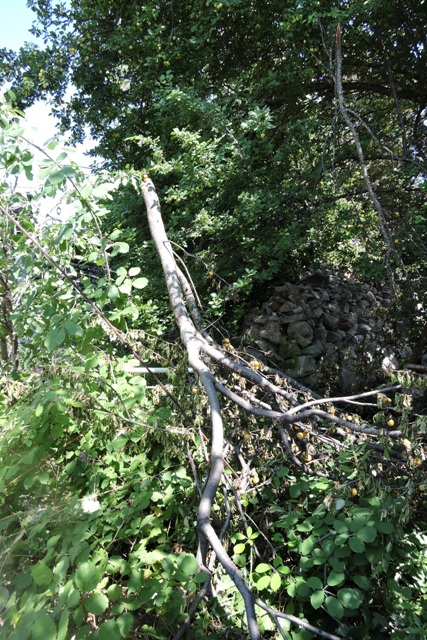
This is an old tree and the branch had broken away from high up. I’m not sure from the colours whether it is diseased. I need to explore further I think.
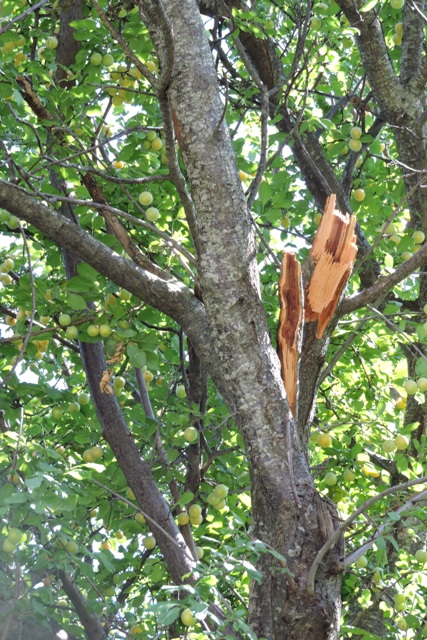
These plums are a couple of weeks away from being ripe, so I have lost the ones on this limb.
My plum trees are covered in fruit this year. I think it will be the best crop I have ever had.
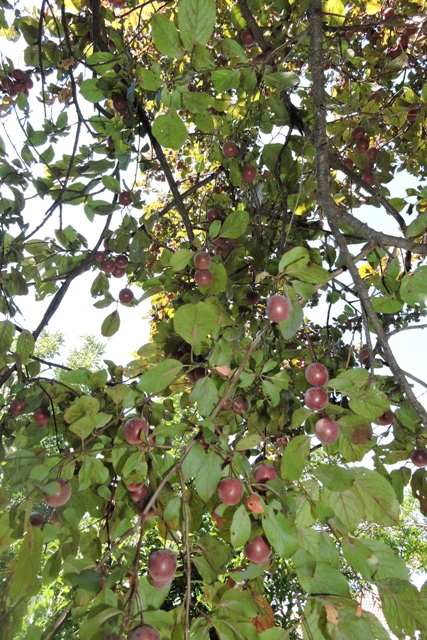
The weight of the swelling plums on the branches is so much, that the top of this Myrobalan Plum has drooped under the weight of the fruit, lowing the height of the tree by a couple of meters.
Trees and plants
Last October in Blog 21/40, I remarked on finding some pitchers on a tree by the side of the path up to the Church.

I identified the tree as a Pistacia terebinth, the Turpentine Tree and that these strange shaped “pitchers” are in fact plant Galls.
They are highly organised series of cells, created when an insect bites into leaves and lays its eggs. The Gall develops, protecting and feeding the larvae inside until autumn, when the Gall splits and the now juvenile flies leave.
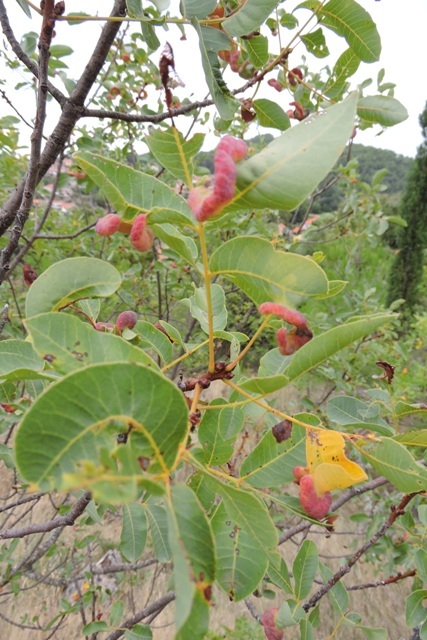
Since identifying the tress, I have found that there are a lot of them, including on the edge of my garden. This week I saw that new galls were forming on some leaves.
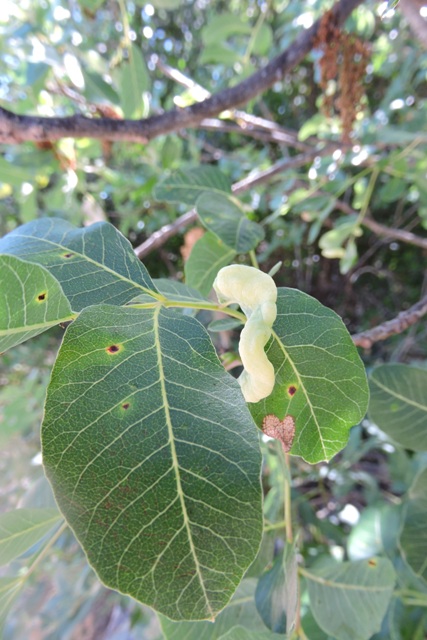
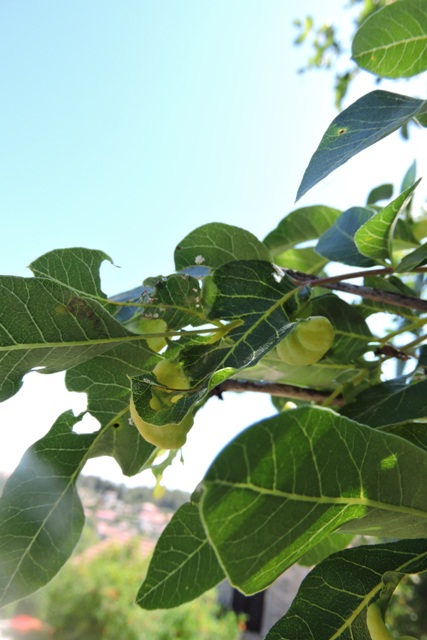
I am always looking for plants and trees which will be happy in the climate around Dol, so when this past winter I saw that Pistachio nut trees are grafted onto Pistacia Terebinth roots, I ordered some for the orchard.
If they grow well in the wild, they should be happy in my orchards.
I ordered several trees and plants, but because one in particular I wanted was not in stock, the order has been held by the nursery.
The garden centre now tell me they will not have the plant I was waiting for this year, so my order arrived this week.
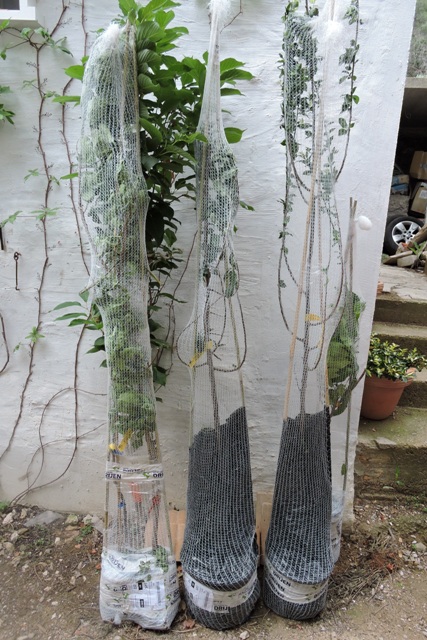
It includes the Pistachio nut trees, but also a shrub called a Leptospernum scoparium

This is a New Zealand native and relative of the Myrtle. Myrtles thrive around my home and being drought resistant, it will go into my new flower border.
All the plants will be in the nursery for the next couple of months, so they don’t succumb to the heat of the summer. I’ll then plant them out in the early autumn into their permanent positions.
Garden life
I am always on the lookout for bugs, especially those which eat away at my trees.
Most pests tend to be small (like aphids) and can be dealt with using a harmless soap spray. I have a spray bottle always made-up ready.
This week as I walked past one of my Cobnut shrubs, I saw a large, 2.5 centimetre caterpillar racing up a stem, to get out of the sunlight.
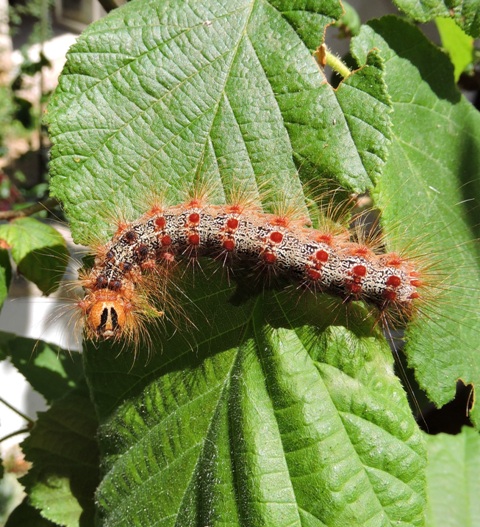
It stood out on a green shrub because of its bright orange raised spots and tufts of orange hair. Looking into the shrub, I saw a second one, hiding in the shade of a leaf.
With its bright markings and tufts of hair, it didn’t take long to identify it as the caterpillar of the Gypsy Moth, Lymantria dispar.
However when I read up about the caterpillar, it gets a VERY bad press. The moth is classed as a highly damaging species. Its caterpillars munch on more than fifty varieties of fruit and forest trees and in sufficient numbers they can completely strip a plantation or orchard.
The moth is rather non-descript, although quite large. This isn’t surprising given the size of the caterpillar, although I have not actually seen one flying here.
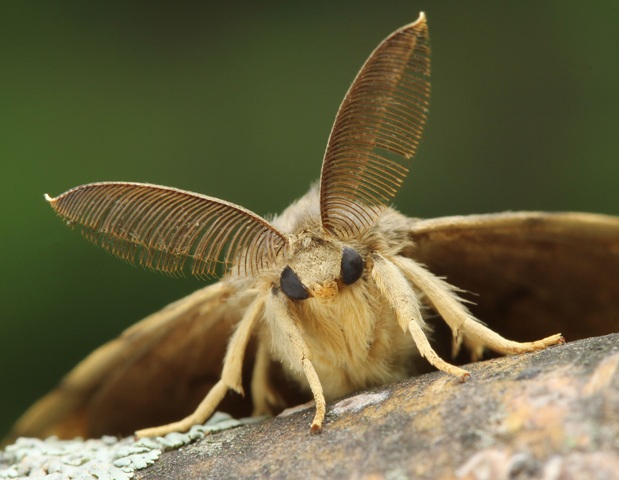
When I went back to my shrub, I couldn’t find either of the ones which I saw. I also couldn’t find any sign of any significant damage to the shrub, or to a nearby Hazel tree. Hazel is another of their food sources.
I am a firm believer of “live and let live”, so with just two examples, I would not be too worried. However in larger numbers, they could cause me some concern.
As least this pest is large and makes itself obvious which is much better than the tiny mites that can only be seen under a lens.
Ramping it up and down
This is one of those jobs I started a couple of weeks ago, then other tasks got in the way.
I need to move my Velika mačka mini digger down into the orchard to grub out some roots, move a few boulders, build a rockery, dig a pond and any other tasks that are reasonably within its capabilities.
However, to get down into the orchard, I need to negotiate my nice stone steps.
There are techniques taught at digger school for getting up, down and around obsticles.
I should also add that when I was building the steps a couple of years back, one of my Blog’s readers’ suggested a ramp rather than steps might be more useful.
I like the look of steps and stone gets slippery in winter, so I continued building them.
So this week I have used eight of the 2 x 0.5m yellow construction boards that I have, laid double, screwed and fixed to three substantial wooden beams to make the ramp.
The beams are resting on the edge of the steps, taking the weight and the slope is gentle enough to make negotiation safe and easy.
It also means than none of the steps are damaged by the digger, blade or bucket.

It was much easier than I anticipated to negotiate the ramp down onto the path.
Once in the orchard, I started by digging out at the back of a small stone wall, to move it to make access to one of the table Olive trees easier.
This is the smallest bucket which is supplied with the machine, but it still can dig a useful amount out each time.
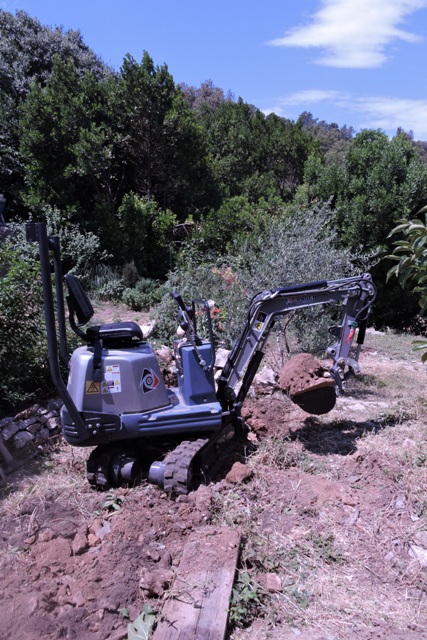
The soil in the orchard is of a good quality and rich in organic material, much better than on any of my other land, but is still made up of around ⅓ by volume of stone.
Talking to my neighbour, I think that I achieved in an hour what would have taken a week by hand, and I barely broke out into a sweat. When the temperature is over +30ºC, this is the only way to dig holes.
My next job is to finish off the hole by hand, reposition the stones for the wall and then start to separate the stones and the soil to backfill.
There is always “something” to be done next week. NCG
One Response
Marcy
The sky photos are incredible.